


Tips For Every Enthusiast

Wine appreciation is more than just sipping a delightful beverage; it's a voyage through culture, history, and the senses. Whether you're a seasoned sommelier or a curious beginner, the world of wine offers endless opportunities for exploration and enjoyment. Here are some valuable tips to enhance your wine appreciation journey and elevate your wine-tasting experience.
1. Start With The Basics: Begin your wine appreciation journey with an understanding of the essential wine categories. Learn about the most common grape varieties, regions, and styles. Red, white, and sparkling wines each have unique characteristics, so familiarize yourself with these broad categories to lay a solid foundation.
2. Use All Your Senses: Wine tasting is a multisensory experience. Take time to observe the wine's appearance, noting its color and clarity. Swirl the wine gently in the glass to release its bouquet, and take in the aromas. When you taste the wine, pay attention to its flavors, acidity, and texture. The tactile sensation on your palate is as crucial as the taste itself.
3. Explore Different Wine Glasses: The shape of your wine glass can impact your wine appreciation experience. Specific glass shapes are designed to enhance the aromas and flavors of different wine types. Investing in a set of quality wine glasses can make a noticeable difference in your tasting experience.
4. Understand The Importance Of Temperature: Serving wine at the appropriate temperature is vital. Reds, whites, and sparkling wines all have their ideal serving temperatures. Generally, red wines are served slightly warmer than white wines. Invest in a wine thermometer to ensure you're serving your wine at the right temperature.
5. Learn How To Pair Wine With Food: Food and wine pairing can be a magical combination that enhances both the meal and the wine. Certain wines complement specific dishes, bringing out the best in both. For example, try pairing a rich, red Bordeaux with a well-marbled steak or a crisp, acidic Sauvignon Blanc with seafood. Experimenting with pairings is an exciting part of wine appreciation.
6. Start A Tasting Journal: Consider keeping a wine tasting journal to document your experiences. Note the wines you've tried, your impressions, and any interesting details. Over time, this journal can become a valuable reference, helping you remember your favorites and charting your wine journey.
7. Attend Wine Tastings And Events: Wine tastings and events provide a unique opportunity to sample a variety of wines and learn from experts. Local wine shops, wineries, and wine clubs often host tastings, so keep an eye out for these opportunities to expand your palate and knowledge.
8. Embrace Wine Education: Formal wine education courses, such as those offered by sommelier schools, can provide in-depth knowledge and a structured approach to wine appreciation. These courses cover everything from wine regions and grape varieties to proper tasting techniques.
9. Trust Your Palate: Ultimately, the most critical aspect of wine appreciation is your personal taste. Trust your palate and explore wines that resonate with you. You don't need to adhere to conventional wisdom; your enjoyment is the most important factor.
Wine appreciation is a journey of exploration and delight. These tips are just a starting point; the world of wine is vast and diverse, offering something for every enthusiast. So, raise your glass, savor the moment, and let the world of wine take you on a rich and rewarding voyage of taste and discovery.
Needle And Thread
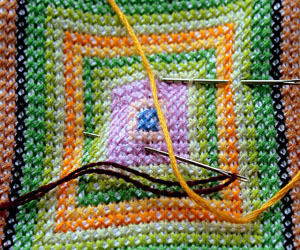 The Thread's Transformative Power: Thread, on the other hand, is a slender strand of material that comes in numerous forms, including cotton, silk, wool, and synthetic fibers. Its primary function is to connect, bind, and adorn. When combined with the needle, thread takes on the role of an artist's brush, creating intricate designs, securing seams, and adding decorative elements to fabrics. The choice of thread can dramatically impact the final outcome, from the sheen of silk to the durability of polyester.
The Thread's Transformative Power: Thread, on the other hand, is a slender strand of material that comes in numerous forms, including cotton, silk, wool, and synthetic fibers. Its primary function is to connect, bind, and adorn. When combined with the needle, thread takes on the role of an artist's brush, creating intricate designs, securing seams, and adding decorative elements to fabrics. The choice of thread can dramatically impact the final outcome, from the sheen of silk to the durability of polyester.
Sewing And Fabric Mending: At its core, the needle and thread serve the practical purpose of sewing and mending fabric. From fixing a torn hem to attaching buttons, these tools are essential for extending the lifespan of clothing and textiles. This ability to repair and restore not only saves money but also contributes to sustainable and eco-friendly practices by reducing waste.
Embroidery And Artistry: One of the most celebrated applications of the needle and thread is in the realm of embroidery. This art form involves the use of different stitches and thread colors to create intricate and beautiful designs on fabric. It has been used for centuries to embellish clothing, linens, and decorative items, adding a touch of elegance and personalization to everyday objects.
Cultural And Traditional Significance: Needlework, often passed down through generations, carries cultural and traditional significance in many societies. It can tell stories, showcase regional motifs, and connect individuals to their heritage. Each culture has its unique stitching techniques and designs, making the needle and thread a powerful tool for cultural preservation.
Nurturing Nature And Your Garden
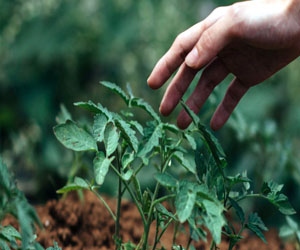 The Essence Of Sustainability In Herb Cultivation
The Essence Of Sustainability In Herb Cultivation
Sustainable herb cultivation involves growing herbs in a manner that minimizes environmental impact, conserves resources, and promotes long-term garden health. This approach takes into consideration the entire lifecycle of the garden, from planting and maintenance to harvest and beyond.
Sustainable Herb Cultivation Practices
Organic Gardening: The foundation of sustainability in herb cultivation is organic gardening. Avoid synthetic pesticides and fertilizers, opting instead for natural and organic alternatives. This practice ensures that your herbs are free from harmful chemicals.
Water Conservation: Use water wisely by installing efficient irrigation systems like drip hoses or soaker hoses. Collect rainwater for irrigation to reduce dependence on municipal water supplies.
Composting: Create your compost heap to recycle kitchen scraps and garden waste. Compost enriches the soil, reduces the need for synthetic fertilizers, and minimizes landfill waste.
Crop Rotation: Implement crop rotation techniques to prevent soil depletion and minimize the risk of herb-specific diseases. Rotating herbs within your garden beds maintains soil health and vitality.
Beneficial Insects: Attract and support beneficial insects like ladybugs, bees, and butterflies. These insects help with pollination and natural pest control in your herb garden.
A Universal Craft With Unique Flavors
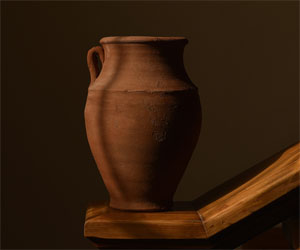 Asia: The Cradle Of Ceramic Art
Asia: The Cradle Of Ceramic Art
The roots of pottery in Asia run deep, with China often hailed as the birthplace of ceramics. Chinese pottery traditions date back thousands of years, and they have left an indelible mark on the global ceramic landscape. Iconic Chinese porcelain, known for its delicate blue and white designs, is world-renowned. Japanese pottery, on the other hand, is celebrated for its earthy, rustic aesthetics and meticulous craftsmanship. Countries like Korea, Thailand, and Vietnam have their unique ceramic traditions, showcasing the diversity within Asian pottery.
Africa: The Rhythms Of Clay
Across the African continent, pottery is both a functional and artistic tradition. The terracotta pottery of the Nok civilization in Nigeria, dating back to 1000 BC, represents some of the earliest ceramic artifacts in sub-Saharan Africa. In many African cultures, women are the primary potters, carrying on age-old traditions of coiling and hand-building. Each piece reflects the cultural values, motifs, and symbols of the community it hails from.
The Americas: Ancient Craftsmanship
In the Americas, pre-Columbian civilizations made remarkable contributions to pottery. The intricate designs and remarkable clay work of the Moche, Inca, and Maya peoples provide a window into the artistic and functional aspects of their societies. Native American tribes have their own distinctive styles, using clay to create pottery that is deeply rooted in their spiritual and cultural practices.

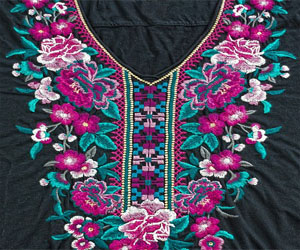
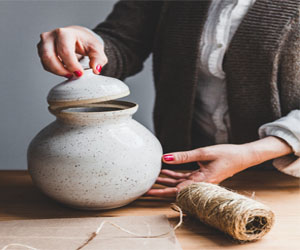
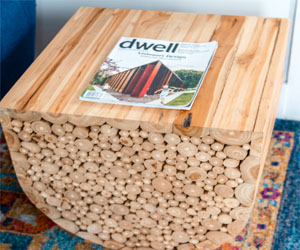


Crafting Innovation In A Glass
 The Rise Of The Microbrewery: The microbrewery movement gained momentum in the late 20th century as a response to the dominance of large, corporate breweries. These passionate and entrepreneurial brewers sought to reintroduce diversity and flavor into a beer market that had become inundated with mass-produced, homogenized brews.
The Rise Of The Microbrewery: The microbrewery movement gained momentum in the late 20th century as a response to the dominance of large, corporate breweries. These passionate and entrepreneurial brewers sought to reintroduce diversity and flavor into a beer market that had become inundated with mass-produced, homogenized brews.
Independent Spirit And Innovation: Microbreweries thrive on their independent spirit. They are often born out of a brewer's desire to experiment, push boundaries, and craft beers that are unique and distinct. This spirit of innovation has led to a remarkable range of beer styles and flavor profiles that cater to every taste preference. From hoppy IPAs to rich stouts and sours, microbreweries offer a diverse array of options for beer enthusiasts.
Craftsmanship And Quality: One of the cornerstones of microbreweries is their unwavering commitment to quality. Brewmasters at these small establishments are deeply involved in every step of the brewing process, from selecting the finest ingredients to meticulously monitoring each batch. The focus on craftsmanship ensures that the beer produced is of the highest quality.
Community And Local Engagement: Microbreweries are not just places to brew and enjoy beer; they often serve as community hubs.
The Allure Of Vintage Items
 A Glimpse Into The Past
A Glimpse Into The Past
Vintage items transport us back in time, allowing us to connect with the past and experience the styles and aesthetics of bygone eras. Each vintage piece carries a story, representing the culture, trends, and craftsmanship of the time in which it was created. It's like holding a tangible piece of history in your hands.
Unique And One-Of-A-Kind
One of the primary attractions of vintage items is their uniqueness. Unlike mass-produced modern goods, vintage pieces are often one-of-a-kind or produced in limited quantities. This rarity gives vintage items a sense of exclusivity and individuality, making them highly sought after.
Quality Craftsmanship
Vintage items are known for their superior craftsmanship. In the past, attention to detail and quality were highly prized, resulting in products that were built to last. Vintage clothing often features hand-stitched seams, while vintage furniture may showcase intricate woodwork. The durability and craftsmanship of vintage items are often far superior to their modern counterparts.
Sustainable Shopping
In a world increasingly concerned about sustainability and environmental impact, vintage shopping has gained popularity as a sustainable alternative to fast fashion and disposable consumer goods. Buying vintage items extends the life cycle of products and reduces the demand for new manufacturing, contributing to a greener and more eco-conscious lifestyle.
Time-Tested Durability
The fact that vintage items have stood the test of time is a testament to their durability. When well-maintained, vintage items can continue to serve their intended purpose or find new life in creative and decorative ways. For example, vintage suitcases can be repurposed as decorative storage, and old mason jars can be used for home canning or as unique vases.